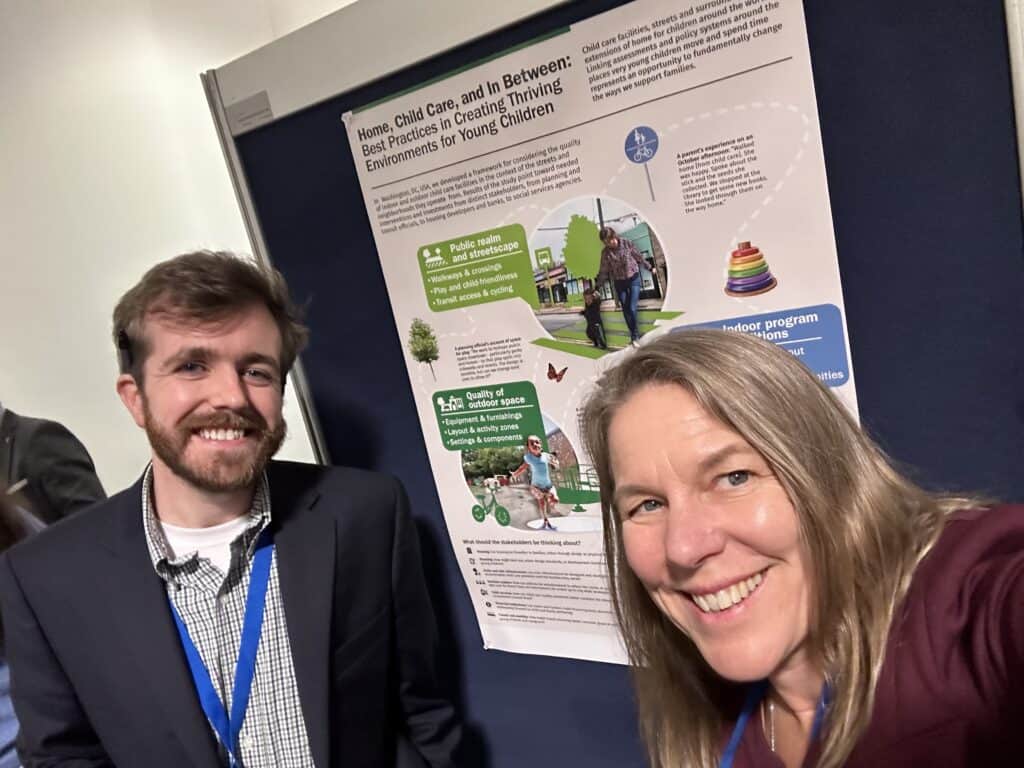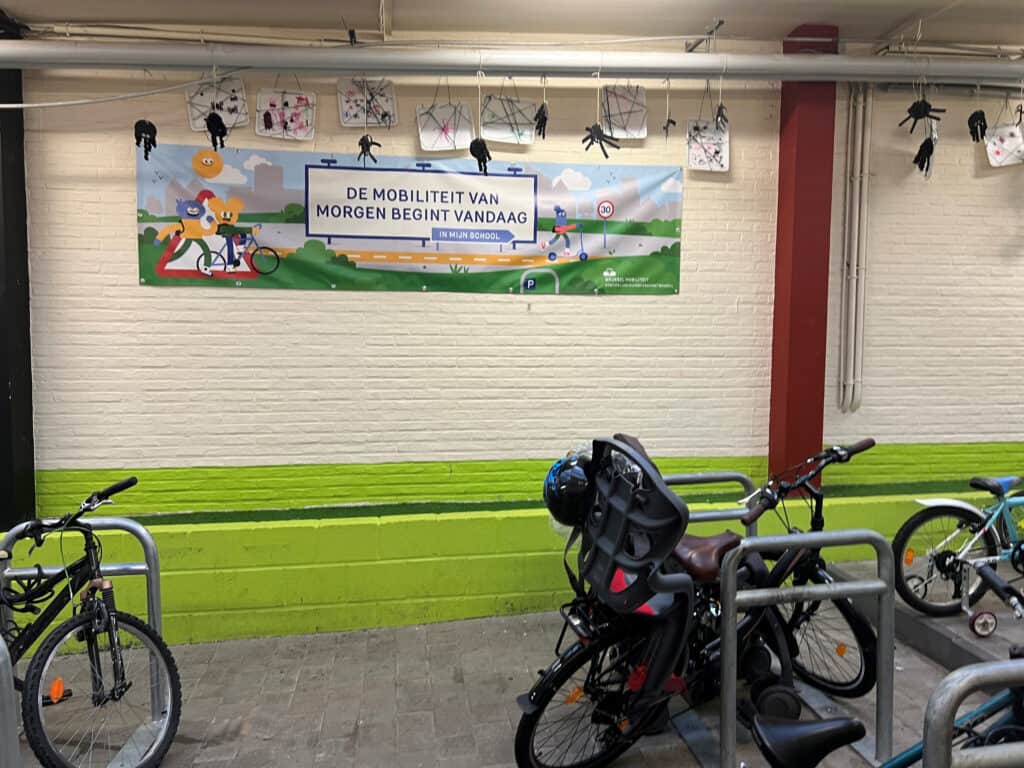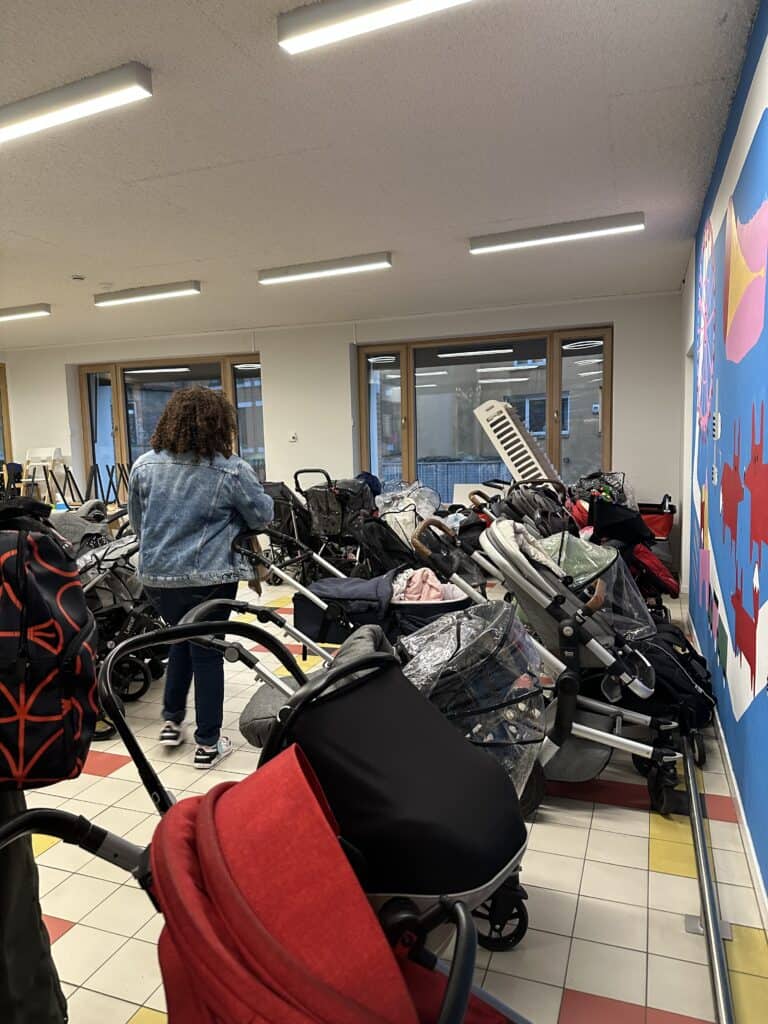We were both honored to have been invited to present at the 11th “Child in the City” conference in late November. The conference theme, “Building the Future,” resonated with us as we think about the needs of young children and LIIF’s growing early care and education (ECE) work.

LIIF, as a community development financial institution (CDFI), has played a unique role in the ECE sector for 25 years. Our efforts scaled dramatically during the pandemic, as government agencies came to us to manage facilities grants for ECE businesses. These agencies knew that, as an inherent part of our CDFI work, LIIF was adept at flexibly deploying capital into historically excluded communities via culturally responsive outreach. For example, LIIF is now partnering with the State of California to disburse up to $350 million in facilities grants to providers in every county in the state.
Three Jam-Packed Days, Five Big Ideas
Over the course of three jam-packed days, we convened with 300 policymakers, urban planners and children’s experts from 35 different countries, all sharing their research and practical experiences to make cities around the globe more child friendly. While we enjoyed sharing LIIF’s best practices working in the United States, we mostly soaked up information that can help guide our work moving forward. This was especially true of our site visits around Brussels and framed by the concepts put forth by UNICEF’s Child Friendly City designation. This designation, which is held by only one city in the U.S., Houston (located in Harris County, Texas where LIIF is excited to launch a new ECE project this month), focuses on governance, planning and child engagement.

While we have many key takeaways, five BIG ideas stood out most:
- Schools and child care facilities can be a central, jumping-off point for broader efforts to improve neighborhoods. Child development does not occur in a vacuum, but school and child care facility planning often happens separately from broader urban design and community revitalization efforts. In contrast, Brussels municipal and regional government is placing school buildings at the forefront of broad urban renewal efforts through the School Contract initiative. Leaders of schools and child development facilities located in Urban Renewal Zones receive technical and financial support from diverse agencies of the Brussels-Capital Region to simultaneously improve indoor classroom spaces, outdoor play areas and the streets immediately surrounding schools. Through extensive public and child participation in design processes, School Contract projects also create new community spaces – gyms, theaters, art studios – for public use within school buildings. This approach is a powerful example of small-scale, coordinated and ground-up change that can drive big benefits to young children and caregivers we often forget about in planning and development decisions.
- Municipal government can be a place for experimentation and creativity, especially in the face of urgent climate issues. Some problems are so urgent that there is insufficient time to wait for long-term policy changes or long bureaucratic processes that delay decision-making or approval for small projects. In a trio of European cities — Hamburg, Germany; Aarhus, Denmark; and Lulea, Sweden — UrbanTestbeds.JR is engaging children in climate action planning processes using Urban Experimentation Zones. These are small areas designated by cities for creative, resident-led, budget-neutral projects implemented as tests to inform future, larger-scale policy change and investment. For example, in an Urban Experimentation Zone featuring a child care center, residents could decide to temporarily close a street to car traffic for six months to study impacts on air quality or child happiness and safety. Without both time limitations and the Experimentation Zone designation, such a project could be delayed by months from review and permitting processes, and public will to commit to such projects may not exist without clear benchmarks and benefits. Such tools and efforts offer exciting opportunities for local government to bring young people into design conversations and test out new ideas, especially in an era of unprecedented challenge driven by the changing climate.
- Open embrace of play in urban planning and design is just as relevant to community-building and social cohesion as it is to child development. Planning and design should foster the creation of spaces that catalyze play and playfulness (see photo at bottom of article, from Parc de Brussels) to ensure that children have spaces in cities to explore and wander. This also serves as a tool for increasing feelings of connectedness for community members in a time of growing loneliness being reported globally. Learning more at the conference about the “mice-ate-the-door” library project in Athens, Greece showed us how the design of something as overlooked as a door to a school building or gate to a playground can make a whole community more fun and engaging for children. Additionally, screenings of the Young Explorers film series gave us a new vantage point for viewing the many ways daily life in cities can be places of play for babies and toddlers.
- Dedicating space to cars and private vehicles often comes at the expense of the exploration and adventure children crave. Cities can and should be places for young children to grow, try new things, and form important social and geographic connections in the earliest years of life; however, decades of car-centric planning in cities across the world has reduced the ability of children to roam and explore. In Brussels, a focus on child and family friendliness through the School Contract is occurring in tandem with the region’s “Good Move” Mobility Plan. Immediate impacts of the plan – which corresponded with a 27% drop in traffic in the city center in the first year of implementation – offers urban planners in the Unites States much to learn from a sustainable-mobility playbook that focuses on bikes, transit and walking. Age-neutral efforts to tame the dominance of cars and motor vehicles in cities are uniquely good for children.
- Multi-generational planning represents an opportunity to form new political coalitions and improve urban experiences for both the very young and very old. Here’s an interesting concept: If we design cities for the very young and the very old, most everyone in between will be just fine. While urban planning and design should be based on the unique mobility needs of different ages, we should initially focus on 2-year-olds and 90-year-olds. As a bonus, we know that many older community members are caregivers for children, showcasing the need to create dual supports. A Brussels community school (photo, below), which includes ECE, also serves as a place for adult exercise and other classes outside of school time. Multiple speakers at the Child in the City conference spoke of the increasing emphasis on multi-generational city building, specifically through coordination of two common organizing frameworks, the World Health Organization’s Age-Friendly Cities designation and UNICEF’s Child Friendly Cities initiative.

Here’s an interesting concept: If we design cities for the very young and the very old, most everyone in between will be just fine.
LIIF ECE Vice President, Advisory and State Policy Shelly Masur and ECE Advisory Services Manager Joe Fretwell
LIIF’s focus on children and families is scaling. We now provide facilities grants and technical assistance to ECE programs, as well as capacity building and advisory services to governments and nonprofit partners across the nation, from Oregon to Georgia, New York to San Diego. The Child in the City conference offered us a unique opportunity to showcase LIIF’s work to a global audience, while also gaining new insights and ideas. We look forward to now sharing our key takeaways and big ideas internally at LIIF, plus externally with policymakers, investors, other CDFIs, providers and the historically excluded communities we serve. Advocating for our children is at the center of our work, giving voice to those still too young to have their own. That is the case in the U.S. … and around the world.

